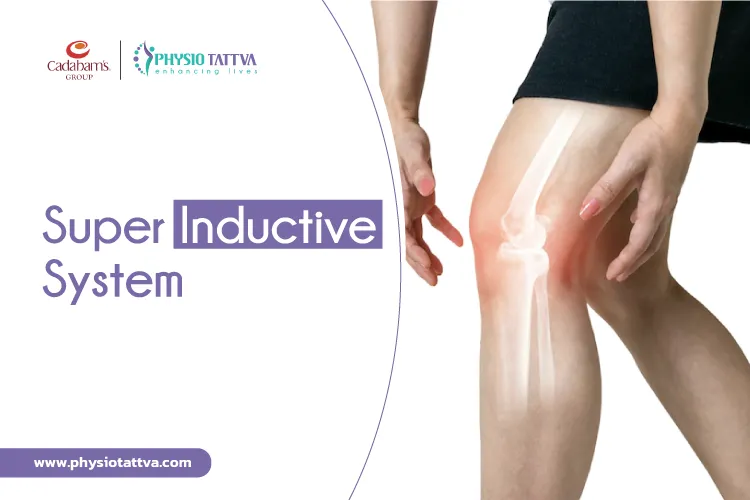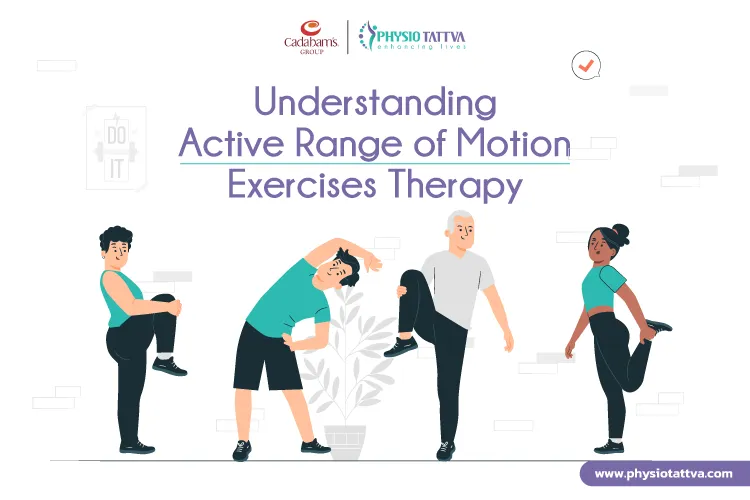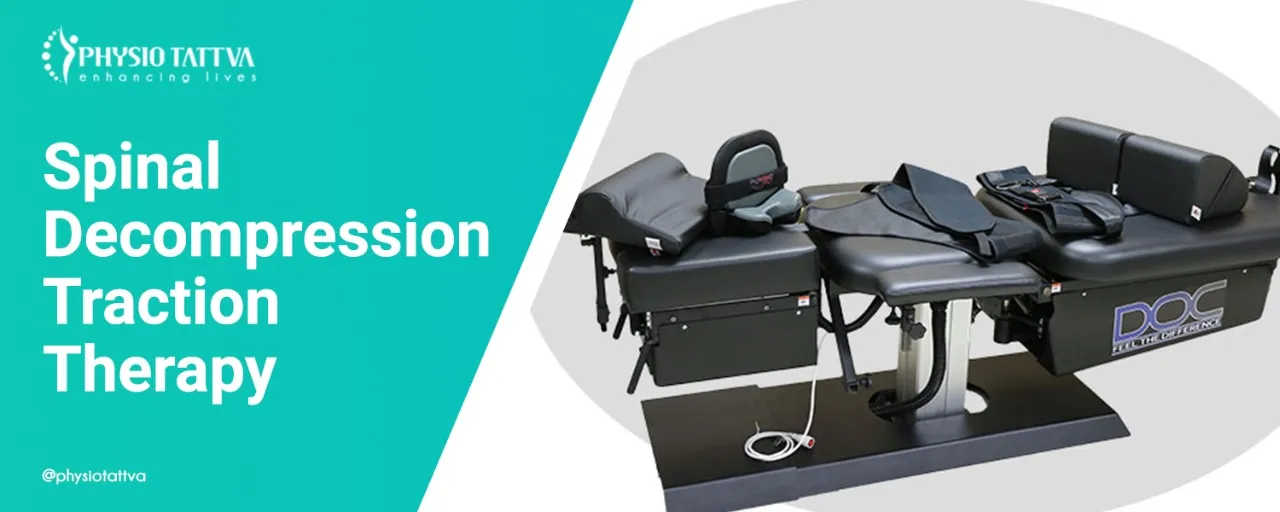Understanding Shoulder Pain and Its Causes
Shoulder pain can result from several factors, such as poor posture, rotator cuff injuries, or inflamed joints. For instance, sitting at a desk with bad posture for extended periods can strain your shoulders, leading to discomfort.
Other causes include repetitive stress from activities like lifting or sports-related injuries. For effective treatment, identifying the cause is essential. Chiropractic adjustment of the shoulder focuses on correcting these issues by improving spinal alignment and reducing muscle tension, which can help alleviate shoulder pain and enhance overall function. A chiropractor for shoulder pain may also assess for conditions like shoulder impingement or instability before recommending specific care.
What is Chiropractic for Shoulder Pain?
Chiropractic care focuses on diagnosing and treating musculoskeletal issues, primarily through spinal adjustments and other manual therapies. Chiropractors aim to restore proper alignment of the spine and joints to alleviate pain and improve function.
For instance, if you have shoulder pain due to spinal misalignment, a chiropractor will use adjustments to realign the spine and reduce pressure on affected nerves.
Who is a Chiropractor?
A chiropractor is a healthcare professional specialised in diagnosing and treating musculoskeletal conditions, particularly those affecting the joints and spine. They use techniques like spinal adjustments to correct misalignments and alleviate pain.
If you experience shoulder pain, a chiropractor will evaluate your spine and shoulder joints to identify misalignments or muscle imbalances. Through chiropractic adjustment of the shoulder, they apply targeted treatments to address these issues, promoting better health and improved mobility. A chiropractor for shoulder pain may also recommend complementary approaches such as posture correction or rehabilitation exercises to enhance recovery.
What is Chiropractic Adjustment of the Shoulder?
Chiropractic adjustment of the shoulder is a technique where a chiropractor applies controlled force to specific areas of the spine or joints to restore alignment and improve function.
For example, if a misalignment in the spine is causing shoulder pain, the chiropractor will use adjustments to correct the alignment. This can relieve pressure on nerves and reduce pain.
Adjustments also help improve joint mobility and support the body’s natural healing processes, leading to better overall function and comfort. In some cases, a chiropractor shoulder adjustment is combined with soft tissue therapy to improve flexibility and reduce muscle tension around the affected area.
The Role of Chiropractors in Chiropractic Adjustment of Shoulder Pain Relief
Chiropractors play an important role in identifying and addressing the root causes of shoulder pain. Their approach goes beyond symptom relief by focusing on alignment, muscle balance, and mobility. Here’s how a chiropractor for shoulder pain helps:
- Assesses spinal and shoulder alignment to detect misalignments that may be causing or worsening shoulder discomfort.
- Performs chiropractic adjustment of the shoulder to realign joints, relieve nerve pressure, and restore normal movement patterns.
- Uses manual therapies such as soft tissue massage and trigger point release to reduce muscle tightness and joint stiffness.
- Recommends exercises to strengthen weak muscles and improve flexibility around the shoulder joint.
- Provides guidance on posture correction and ergonomics to reduce daily strain and prevent recurrence.
- May combine spinal adjustments with targeted chiropractor shoulder adjustment techniques to support integrated care for shoulder and upper back function.
By offering a comprehensive, hands-on approach, chiropractors help restore mobility, reduce pain, and promote long-term recovery without surgery or medication.
Tips to Prevent Shoulder Pain
Preventing shoulder pain involves simple daily habits that protect joint health and posture. Here are quick, actionable tips to help reduce strain and keep your shoulders strong and mobile:
- Maintain good posture while sitting or standing
- Take regular breaks if working at a desk or computer
- Avoid carrying heavy bags on one shoulder
- Stretch your shoulders and upper back daily
- Warm up properly before any physical activity
- Strengthen shoulder muscles with guided exercises
- Adjust your workstation to support shoulder alignment
- Avoid repetitive overhead movements when possible
- Sleep on your back or the non-affected side with proper support
- Follow your chiropractor’s advice for at-home care routines
The Benefits of Chiropractic Adjustment of Shoulder Pain
Shoulder pain can significantly impact your daily routine and overall quality of life. One effective, drug-free option to consider is a chiropractic adjustment of the shoulder, which helps treat the root cause of the discomfort, not just the symptoms.
Through hands-on techniques and a personalised care plan, a chiropractor for shoulder pain can help reduce muscle tension, restore alignment, and improve shoulder joint function. Chiropractic care is especially helpful for individuals with chronic pain, repetitive strain injuries, or posture-related discomfort.
Enhancing Overall Well-being
Chiropractic care enhances overall well-being by addressing not just shoulder pain but also its impact on daily life.
For instance, relieving shoulder pain through chiropractic adjustment of the shoulder can improve your ability to perform daily activities and reduce stress related to discomfort. Chiropractors often provide lifestyle advice and exercises that promote better posture and overall health.
Safe and Non-Invasive Methods
Chiropractic care employs safe and non-invasive techniques in the treatment of pain in the shoulders. Techniques like spinal adjustments and manual therapy are non-surgical and non-pharmacological.
For example, when poor posture is causing you shoulder pain, a chiropractor will make a slight adjustment in your spine alignment and relieve some of the pressure from the shoulder area, all without the use of invasive procedures.
These methods promote the body’s natural healing process and make chiropractic shoulder blade adjustment a safe option for managing pain.
Complementary to Other Therapies
Chiropractic care complements other therapies by integrating well with treatments like physiotherapy or massage.
For example, if you are receiving physiotherapy for shoulder pain, chiropractic adjustment of the shoulder can enhance the effectiveness of your physiotherapy exercises by improving spinal alignment and reducing muscle tension.
This integrated approach supports comprehensive care, addressing different aspects of shoulder pain and contributing to overall recovery and well-being.
Targeted Pain Management Strategies
Chiropractors use targeted pain management strategies to address specific sources of shoulder pain. For instance, if shoulder pain is due to a misaligned spine, a chiropractor will perform precise spinal adjustments to correct the alignment.
They may also use techniques like soft tissue therapy and chiropractor shoulder adjustment to release tight muscles around the shoulder
Boosting Muscle Strength and Flexibility
Chiropractic care boosts muscle strength and flexibility through targeted exercises and manual therapies.
For example, after addressing shoulder misalignments with chiropractic adjustment of the shoulder, a chiropractor will recommend exercises to strengthen the shoulder muscles and improve flexibility.
This helps support the shoulder joint, reduces the risk of future injuries, and enhances overall function. By improving muscle strength and flexibility, chiropractic care contributes to better shoulder health and overall physical performance.
Immediate Relief and Mobility Improvement
Chiropractic care provides immediate relief and improves mobility by addressing spinal misalignments and muscle tension.
For example, after a spinal adjustment, you might experience reduced shoulder pain and increased range of motion as the alignment helps relieve pressure on nerves and muscles. Manual therapies, such as soft tissue massage, further enhance mobility by loosening tight muscles.
Preventing Future Injuries
A chiropractor may provide exercises and postural advice to reduce strain on the shoulder and avoid repetitive stress injuries. By correcting alignment issues and addressing muscle imbalances, chiropractors for shoulder pain reduce the risk of recurring shoulder pain and support long-term joint health.
This preventive approach helps maintain proper function and reduces the likelihood of future injuries, keeping you active and pain-free.
Long-term Benefits and Preventive Care
Regular chiropractic adjustment of the shoulder can maintain proper spinal alignment, reducing the risk of future issues and enhancing overall function.
Preventive care strategies, such as ongoing exercises and posture correction, help sustain improvements and prevent recurring pain. This long-term approach contributes to better overall health, ensuring that you remain active and free from chronic shoulder pain.
Who is a Good Candidate for Chiropractic Adjustment of Shoulder?
If you’re dealing with recurring shoulder discomfort, stiffness, or limited mobility, a chiropractic adjustment of the shoulder may be the right solution. This treatment suits a range of individuals seeking non-invasive relief from musculoskeletal issues. Here are common candidates for chiropractic shoulder care:
- Office workers with poor posture: Spending hours at a desk can strain the neck and shoulder muscles, making chiropractor shoulder adjustment beneficial.
- Athletes and active individuals: Repetitive shoulder movements can lead to misalignments, which chiropractic adjustments help correct.
- Those with chronic shoulder or neck pain: Ongoing tension and joint dysfunction often respond well to manual therapies and spinal realignment.
- Patients seeking drug-free pain management: A chiropractor for shoulder pain offers a holistic approach without medication or surgery.
- People recovering from shoulder overuse or strain: Targeted adjustments and soft tissue therapy can accelerate healing and restore normal function.
Why Should You Choose Chiropractic Adjustment of Shoulder for Pain Relief?
For anyone looking to treat shoulder pain without medication or surgery, a chiropractic adjustment of the shoulder offers a safe and effective option. It focuses on the underlying cause of pain while promoting long-term mobility and recovery. Here's why it’s worth considering:
- Addresses root causes, not just symptoms: By correcting misalignments, a chiropractor for shoulder pain treats the source of discomfort rather than masking it.
- Non-invasive and drug-free: Chiropractic care avoids side effects of medications and the risks of surgical procedures.
- Improves joint function and mobility: Techniques like chiropractor shoulder adjustment restore natural movement and reduce stiffness.
- Supports faster recovery from injuries: Manual therapy and spinal adjustments enhance circulation and muscle balance for quicker healing.
- Complements other therapies: Chiropractic care can work alongside physiotherapy, massage, or exercise rehab for holistic shoulder pain management.
Specialised Chiropractic Techniques for Shoulder Pain Relief
Spinal adjustments help alleviate shoulder pain by correcting misalignments in the spine that can affect shoulder function.
For example, if you have shoulder pain due to poor posture, a chiropractor will adjust your spine to improve alignment and relieve pressure on nerves. This adjustment can reduce pain and enhance mobility by restoring proper function to the nerves that connect to your shoulder.
Spinal Adjustments to Alleviate Shoulder Pain
Spinal adjustments target misalignments in the spine that can cause shoulder pain. A chiropractor applies controlled force to specific areas of the spine as part of a chiropractic adjustment of the shoulder.
This realigns vertebrae and relieves pressure on nerves that may contribute to shoulder pain. Adjustments restore proper function to the spine, improving nerve communication to the shoulder area, which can reduce pain and increase mobility.
Soft Tissue Therapy for Muscle Relaxation
Soft tissue therapy targets muscle tension and stiffness around the shoulder to provide relief. For example, if your shoulder pain is due to tight muscles, a chiropractor may use massage techniques to relax these muscles and improve blood flow. This therapy helps reduce pain, increase flexibility, and enhance overall shoulder function.
Active Release Technique (ART) for Targeted Pain Relief
Active Release Technique (ART) offers targeted pain relief by focusing on specific muscles and their attachments.
For example, if you have shoulder pain caused by muscle knots, ART involves the chiropractor applying pressure to the affected muscles while you move them through specific ranges of motion.
This technique is often used in chiropractic adjustment of the shoulder to help break down scar tissue, release muscle tension, and improve shoulder mobility.
Dry Needling to Reduce Muscle Tension
Dry needling involves inserting thin needles into trigger points or tight muscle areas to reduce tension and pain.
For example, if your shoulder pain is due to muscle knots, dry needling can help by directly targeting these knots to relax the muscles. The needles stimulate blood flow and promote healing in the affected area.
This technique helps relieve pain and improve mobility by addressing deep-seated muscle tension that other treatments might not reach.
Kinesio Taping for Shoulder Support and Stability
Kinesio taping supports and stabilises the shoulder by applying flexible tape to the skin. For example, if you have shoulder pain from instability or overuse, kinesio tape can be applied to help support the shoulder joint and reduce strain
The tape helps improve muscle function and joint alignment, providing support while allowing for a full range of motion.
Trigger Point Therapy for Pain Management
Trigger point therapy targets specific muscle knots that cause pain and discomfort. For example, if you have shoulder pain due to tight muscles, a chiropractor will apply pressure to these trigger points to release the knots and reduce pain.
This therapy helps by increasing blood flow and relaxing the affected muscles. The release of these tight areas can lead to immediate pain relief and improved range of motion through chiropractic adjustment of the shoulder.
Rehabilitation Exercises to Strengthen Shoulder Muscles and Improve Flexibility
After a chiropractic adjustment of the shoulder, targeted exercises can help reinforce spinal alignment, restore range of motion, and strengthen key shoulder muscles. These movements also reduce the risk of future injuries and support long-term recovery.
Here are some effective rehabilitation exercises:
- Pendulum Swings: Lean forward and gently swing your arm in a circular motion. This promotes joint mobility and reduces tension post-adjustment.
- Wall Crawls (Finger Walks): Walk your fingers up a wall as high as you comfortably can. This improves flexibility and shoulder elevation.
- Shoulder Blade Squeezes: Sit or stand tall and squeeze your shoulder blades together. This activates the upper back and improves posture.
- Towel Stretch: Hold a towel behind your back with one hand over the shoulder and the other behind the lower back. Gently pull to stretch the shoulder and improve internal rotation.
- Resistance Band External Rotations: Rotate your forearm outward against resistance with your elbow tucked at your side. This strengthens the rotator cuff.
- Overhead Arm Raises: Raise your arms overhead slowly with or without light weights to build endurance and improve range of motion.
- Cross-Body Shoulder Stretch: Pull one arm across your body using the opposite hand to stretch the shoulder capsule and reduce stiffness.
Perform these exercises regularly under the guidance of your chiropractor for shoulder pain to enhance flexibility, rebuild strength, and maintain the benefits of chiropractic shoulder adjustment.
How to Prepare for Your Chiropractic Adjustment of Shoulder for Pain Relief?
Proper preparation helps you get the most out of your session and ensures that your chiropractic adjustment of the shoulder is both safe and effective. Here's what to expect before, during, and after your visit.
Communicating Your Symptoms Effectively
Accurate communication allows your chiropractor for shoulder pain to tailor your treatment precisely to your needs:
- Describe the type of pain (sharp, dull, radiating, etc.) and when it occurs.
- Mention any triggers like specific movements, posture, or activities.
- Share your medical history, including previous injuries or shoulder treatments.
- Explain how the pain affects your daily function or work performance.
- Be open about lifestyle habits that may contribute (e.g., desk posture, exercise routines).
How to Physically Prepare for the Visit
Make the most of your appointment by being physically prepared:
- Wear loose or sleeveless clothing for easy access to the shoulder and upper back.
- Avoid heavy meals or intense activity before the session to stay comfortable.
- Bring previous medical records or X-rays, if available.
- Ensure you're well-rested and hydrated prior to your visit.
What to Expect During the Adjustment
Your chiropractor shoulder adjustment session may include:
- A thorough physical evaluation of your shoulder and spinal alignment.
- Targeted adjustments to relieve joint restriction and reduce muscle tension.
- Audible popping or cracking sounds during the adjustment - completely normal.
- Manual therapies such as soft tissue release or mobilisation, if needed.
- Your chiropractor will explain the process and ensure your comfort at every step.
Aftercare and Follow-up
Proper aftercare ensures sustained results and proper recovery from your chiropractic adjustment of the shoulder:
- Follow post-treatment advice; this may include posture tips, stretching, or resting the shoulder.
- Avoid lifting heavy objects or strenuous activity for at least 24–48 hours.
- Do any prescribed home exercises to maintain flexibility and mobility.
- Attend follow-up visits to assess progress and adjust the care plan as needed.
- Inform your chiropractor of any unusual discomfort or new symptoms post-session.
Risks Associated with Chiropractic Treatments for Shoulder Pain
Chiropractic adjustment of the shoulder is generally considered safe when performed by a licensed and experienced professional. However, like all hands-on therapies, there are some potential risks to be aware of:
- Temporary soreness or stiffness: It’s common to feel mild discomfort or muscle soreness for 24–48 hours after a chiropractor shoulder adjustment.
- Fatigue or dizziness post-session: Some individuals may feel slightly lightheaded or tired after treatment, especially if it’s their first adjustment.
- Increased pain or new symptoms: Though rare, some patients may experience a temporary flare-up of symptoms or pain in nearby areas. Always inform your chiropractor for shoulder pain if this occurs.
- Risk of joint strain or sprain: If the adjustment is too forceful or applied incorrectly, it may overstretch soft tissues; this risk is minimised with proper assessment.
- Underlying conditions may worsen: People with osteoporosis, severe arthritis, or shoulder instability should be evaluated carefully before undergoing manual adjustments.
- Delayed diagnosis: If chiropractic care is pursued without proper imaging or medical referral, there’s a risk of missing underlying issues like fractures or rotator cuff tears.
- Emotional discomfort: Some individuals may feel anxious or uncertain about manual therapy techniques; proper explanation and consent help reduce this concern.
To ensure a safe and effective experience, always consult a qualified chiropractor for shoulder pain, disclose your full medical history, and ask questions about any risks related to your specific condition.
How to Choose the Right Chiropractor for Chiropractic Adjustment of Shoulder?
Finding the right provider is essential for effective care and lasting relief. Here are important factors to consider when choosing a chiropractor for shoulder pain:
- Look for relevant experience and specialisation: Choose a practitioner who regularly performs chiropractic adjustment of the shoulder and has specific experience treating shoulder-related conditions.
- Check their credentials and licensing: Ensure they are certified and registered with a recognised chiropractic council or board in your region.
- Read patient reviews and testimonials: Look for feedback that reflects successful outcomes for shoulder pain treatment, professionalism, and patient satisfaction.
- Understand their treatment approach: Ask about techniques used, such as chiropractor shoulder adjustment, soft tissue therapy, or rehabilitation exercises, and how they personalise care.
- Book an initial consultation: Use this opportunity to share your symptoms and expectations. A good chiropractor will assess your condition thoroughly and explain their treatment plan clearly.
- Evaluate communication and comfort: Choose someone who listens to your concerns, answers your questions, and makes you feel comfortable and informed throughout the process.
Selecting the right chiropractor for shoulder pain improves your chances of recovery and ensures that your care plan is safe, targeted, and aligned with your needs.
Experience Expert Chiropractic Adjustment of Shoulder at Physiotattva
Physiotattva offers specialised care for shoulder pain relief through experienced chiropractors and a variety of effective treatments. We provide tailored chiropractic adjustment of the shoulder, soft tissue therapies, and rehabilitation exercises designed to address your specific shoulder concerns.
Our focus on personalised care ensures that each treatment plan is customised to your individual needs. With a comprehensive approach and commitment to patient satisfaction, Physiotattva is a trusted choice for effectively managing and relieving shoulder pain. Choosing us means receiving expert care that targets the root cause of your pain and supports long-term recovery.
At Physiotattva physiotherapy clinics in Bangalore and Hyderabad, you receive personalised care tailored to your specific needs, ensuring effective results and comfort throughout your journey to recovery.
Don’t wait to start your recovery! Get in touch with Physiotattvafor more details! Contact us at +91 89510 47001.




-Physiotherapy.webp)
-for-Shoulder-Pain-Relief.webp)
-for-Knee-Pain-Relief.webp)


-for-Back-Pain-Relief%20(1).webp)




.webp)











.webp)


.webp)





.webp)
.webp)


.webp)
.webp)

.webp)

.webp)

.webp)
.webp)

.webp)
.webp)









.webp)


.jpeg)


.webp)


.webp)










.png)








%20(1)-p-3200.jpeg)


.jpg)
.webp)
.webp)
.webp)




